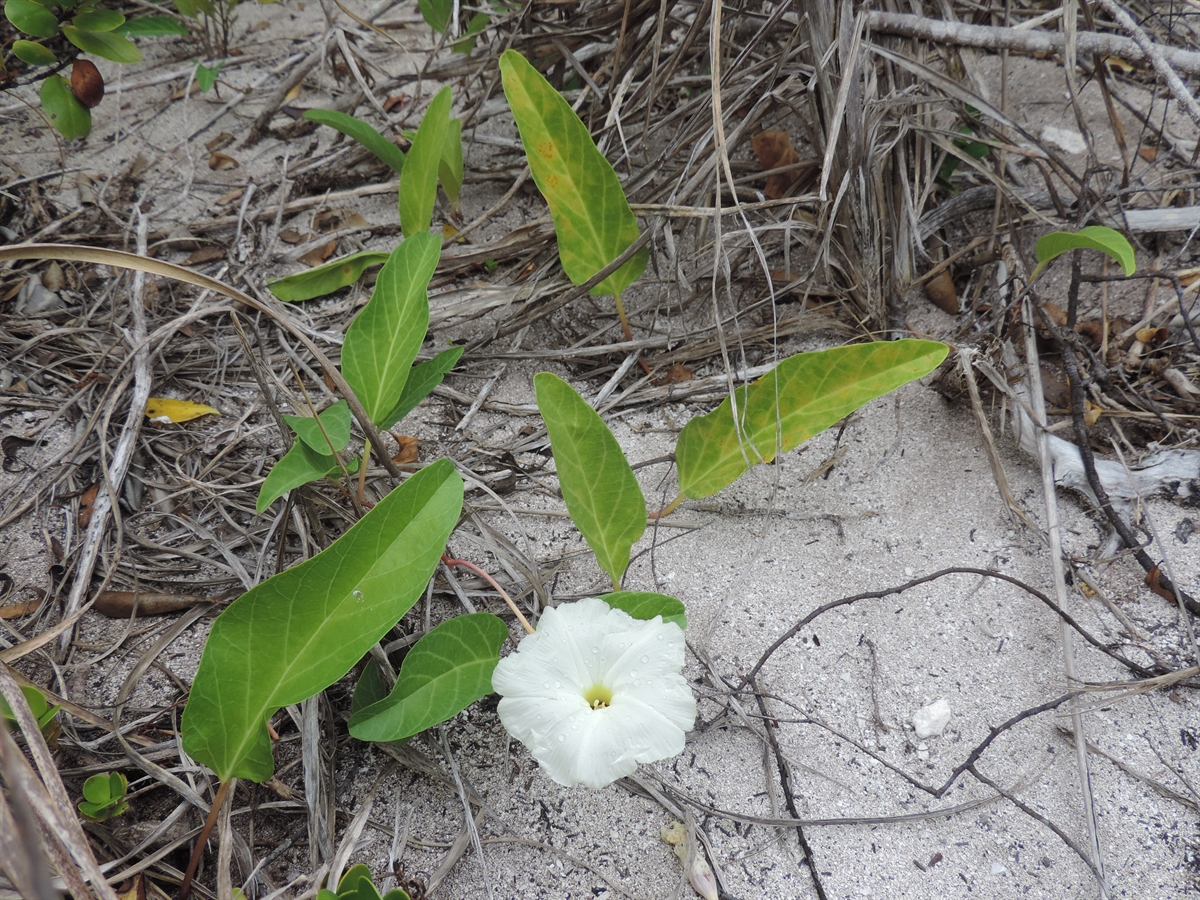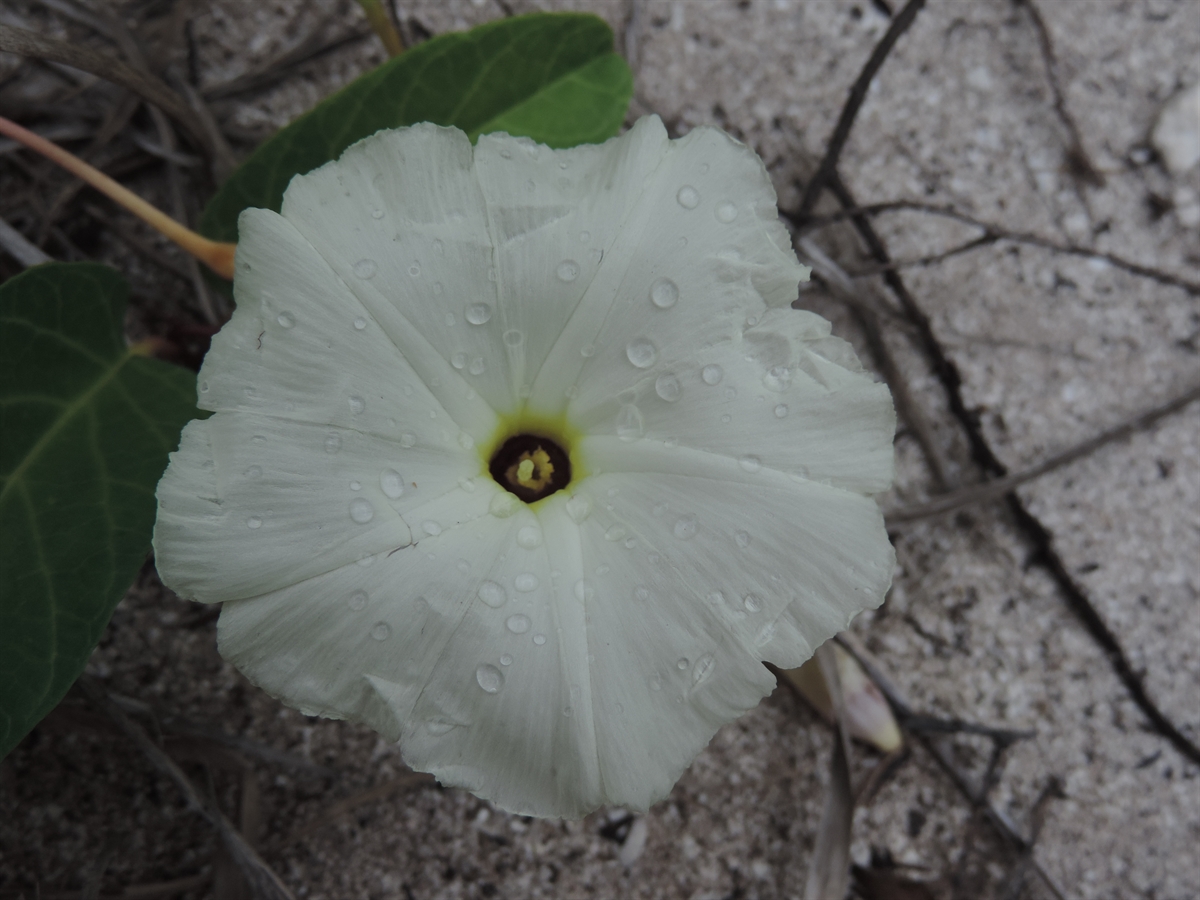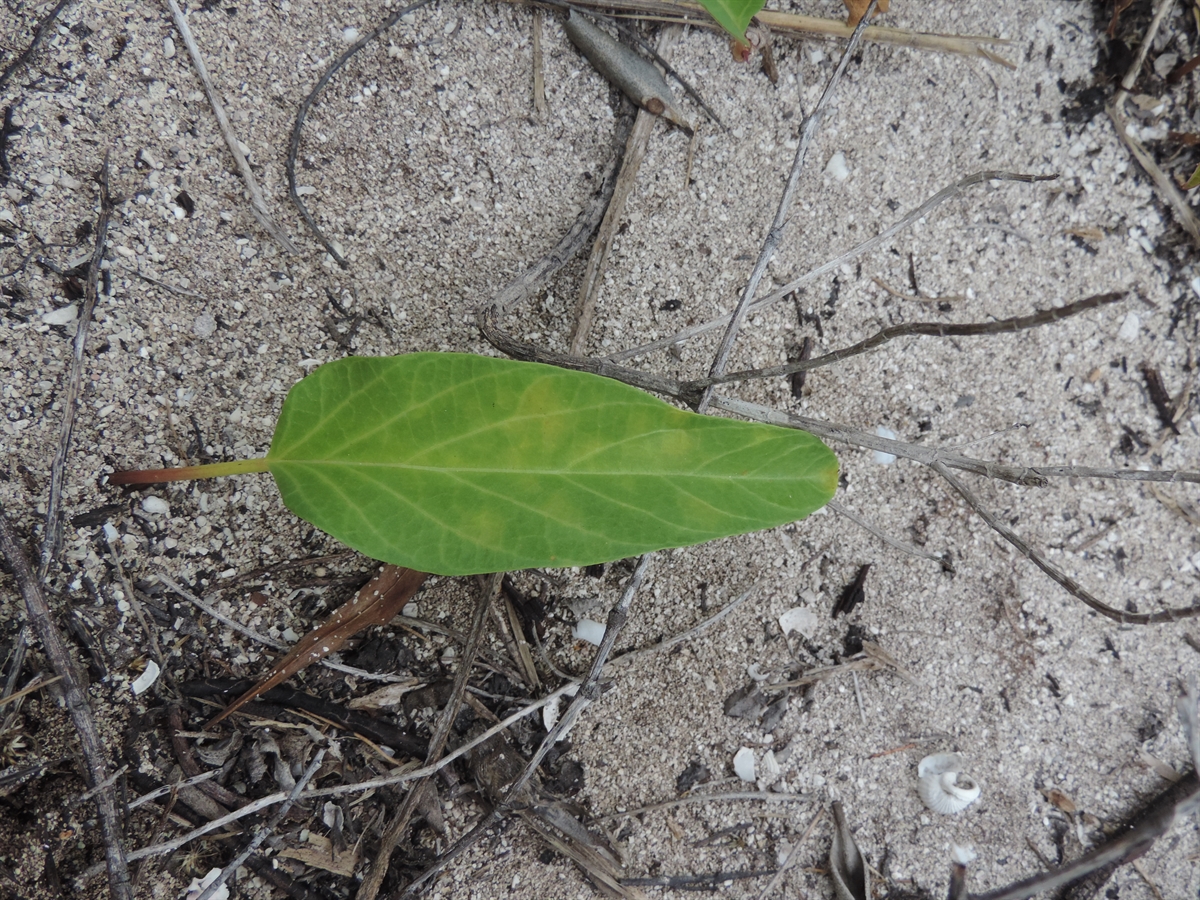Habit: Ipomoea imperati grows as a spreading (subsurface) perennial vine to 12 meters in length, with roots at the nodes. The leaves are arranged alternately to 10 centimeters long and 5 centimeters wide and the blade is ovate with an entire margin, a slightly retuse leaf apex and a cordate leaf base.
The complete, perfect, actinomorphic flowers are solitary in leaf axils. The calyx has 5 unfused, green sepals. The funnelform corolla has 5 fused, white petals that are slightly yellow at the throat. There are 5 functional stamens fused to the base of the corolla. The superior ovary with 3 locules and numerous ovules. The round fruit is a tan, many seeded capsule with tan slightly tomentose seeds.
Habitat: Ipomoea imperati grows in sandy coastal soil.
Distribution: Ipomoea imperati occurs throughout the Lucayan Archipelago and coastal areas of tropical and subtropical regions of the world.
Medicinal/Cultural/Economic Usage: Ipomoea imperati is not known to be used medicinally in the Lucayan Archipelago.


